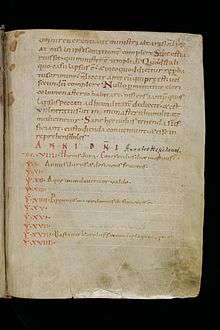Annales Alamannici

The core text of the Annales Alamannici covers the years 709 through to 799. Spread over several Swabian monasteries, the annals were continued independently in several places, in the Reichenau Abbey up to 939 (continued by Hermannus Contractus), in St. Gallen up to 926. The St. Gallen version was continued from 927 to 1059 as the Annales Sangallenses maiores.
The Annales Almannici are also referred to as the Annals of St. Gall and provide one of the earliest records of Medieval Europe available.[1] They are notable for their short, cursory style and limited narrative. To the modern scholar, they might appear to be incomplete, and for that reason, of limited value. However, in recent years, historians such as Hayden White have argued that the style of the chronicles depict a worldview that is distinctly medieval where "things happen to people rather than one in which people do things." For that reason, they provide insight into the medieval mind and what things the people of the Dark Ages considered important. [2]
Sources
- Annales Alamannici, ed. W. Lendi, Untersuchungen zurfruhalemannischen Annalistik. Die Murbacher Annalen. (Freiburg, 1971)